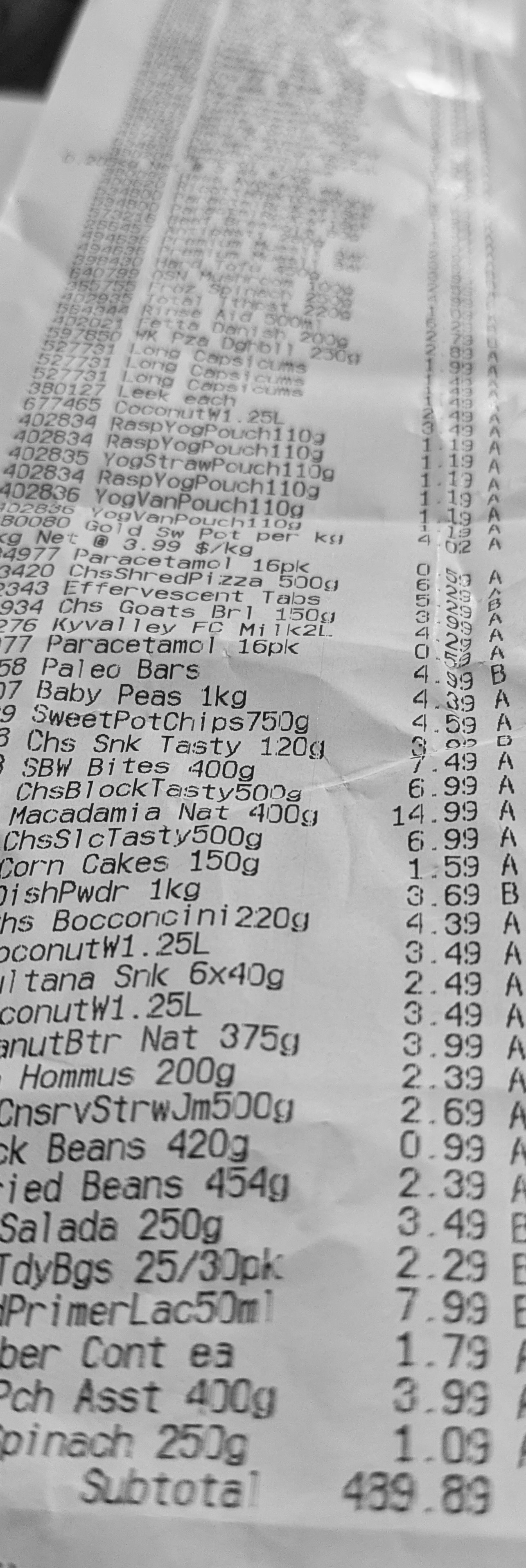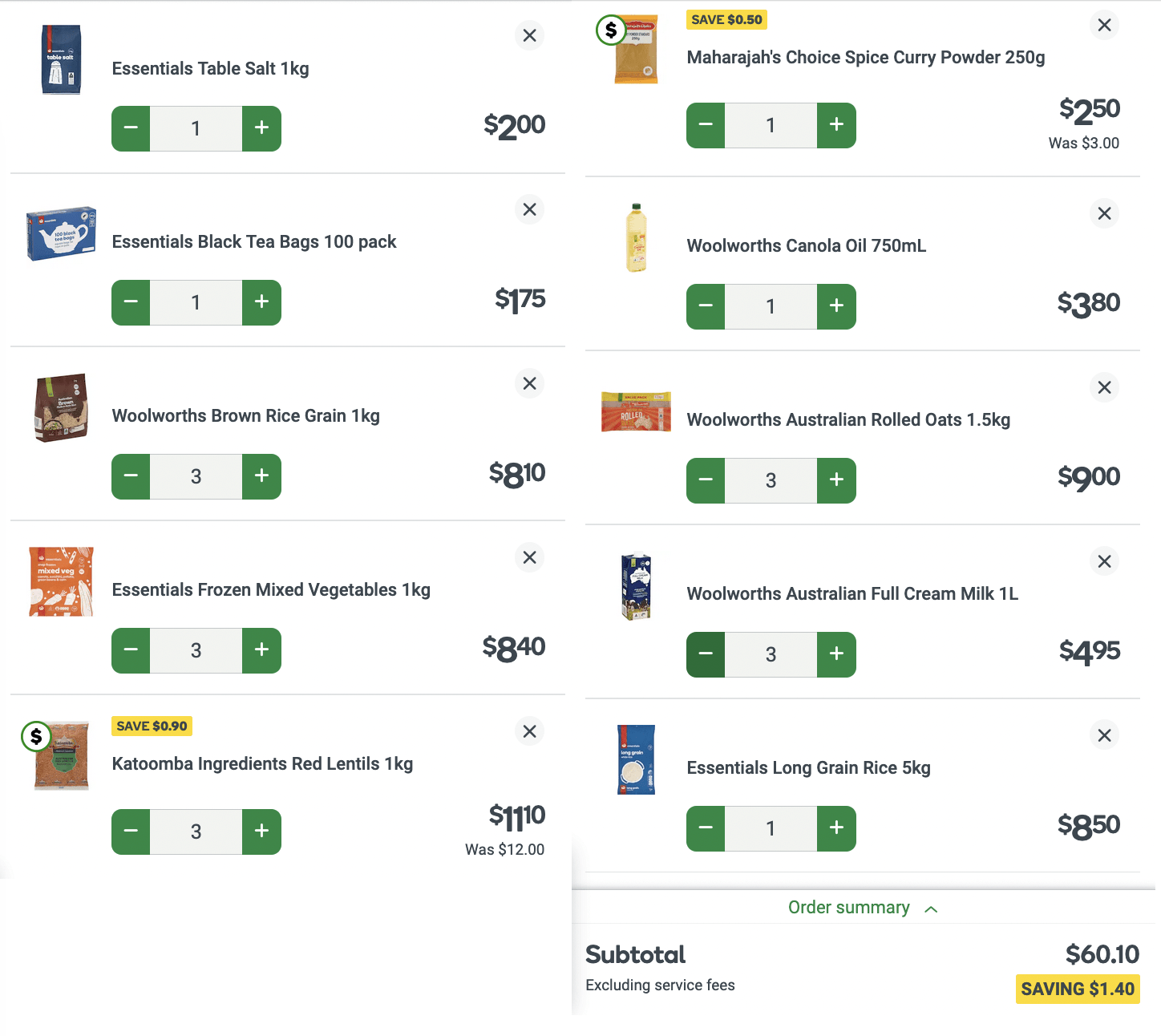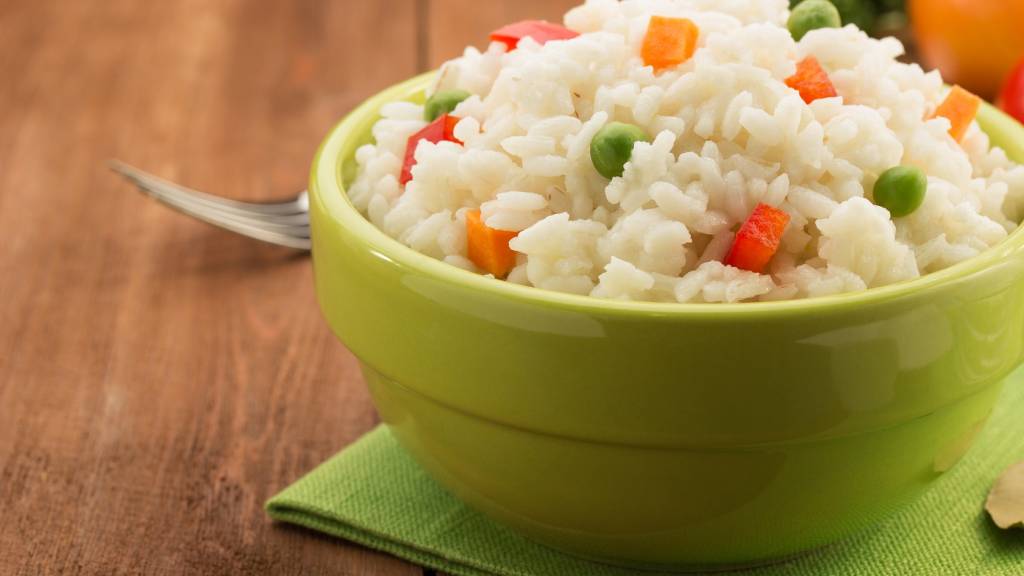I spent $490 at the supermarket on the weekend. It was a big shop, we bought some wine, and some of the items will last ages… but still. That’s a lot of money for a grocery run (receipt appended). The cost of food has soared, as the next chart shows.
On the internet, I often encounter people asking for advice on how to make their food budget stretch as the cost of living continues to bite. Last week a young person made a desperate entreaty: How can I make a $50 food budget last a week?
 Jason Murphy’s shopping receipt
Jason Murphy’s shopping receipt
It’s an interesting question. There are are a few people out there on the internet producing content to show what’s possible, including @dollartreedinners in the US. The TikTok and YouTube account, run by Rebecca Chobat, shares recipe videos for meals that can be made using ingredients from discount store Dollar Tree. (A video on how to cook up a Dollar Tree Thanksgiving dinner for just $20 totally took off.)
Obviously I’m a long way off spending so little. But if you eat at home and have a fridge, cooktop and some utensils, there’s ways of achieving it.
The first hurdle you need to clear is making sure you have enough essential calories. The most economical way to get calories in a supermarket is vegetable oil, and vegetable oil is cheap (which is why it is in all the processed food these days).
Independent. Irreverent. In your inbox
Get the headlines they don’t want you to read. Sign up to Crikey’s free newsletters for fearless reporting, sharp analysis, and a touch of chaos
By continuing, you agree to our Terms & Conditions and Privacy Policy.
A $6.60 bottle of canola oil has enough energy (68,000kJ) to power a person for almost seven days.
(We are working off the theory of a person needing around 10,000kJ a day — if you’re young, male, work a physical job, or you are tall, you may need more; if not you may need slightly less.)
So you could, in theory, meet your calorie needs for far less than $50 a week. A more sickening idea than living off pure oil is hard to imagine, of course. So it’s very pleasing to discover the second-cheapest way to get raw calories is rice.
A $8.50 bag of rice has 71,000kJ and could power an adult human for just over seven days. And of course rice and oil combined starts to be less disgusting. We are working our way towards a fried rice here!
Throw in some salt ($2 for a 1kg bag is the cheapest) and some vegetables ($2.80 a kilogram, frozen) and you can make a palatable meal. Not delicious. But edible. It would be a hard but not Sisyphean task to eat it three times daily for seven days in a row. You could go to bed feeling full and you might not even get scurvy.
Plus we haven’t even blown the budget yet. So forget a week for $50. Can we do a month for $60?
A month of eating for $60. Is it possible?
Without further ado I present my shopping list. What follows is a plan for how to survive a month on a $60 food budget, eating more than just fried rice, and shopping at Woolworths.

(Note the quantities, we’re getting three one-litre cartons of milk, for example. They cost $1.65 each.)
So what do we get out of this shopping list?
Breakfast
Oats and milk. 150g of oats and 100mL milk. Porridge or muesli, your call. There’s protein in there. Not a lot. But some (3.3g per 100g in milk, and 13g in 100g of oats). This meal delivers about 30% of your daily calories. You get a cup of tea as well (teabags are so cheap, a hot drink is the luxury on the list).
Lunch
Fried rice. Recipe as above. White rice, oil, salt and frozen veg. We do not want fully half our calories to come from oil so the canola oil pack is not the economy-sized pack I mentioned above, we will make 750mL of oil cover the month.
Lunch has about a third of your daily calories.
That frozen veg mix, by the way, includes carrot, zucchini, potato, green bean and sweetcorn. It’s 8% carbs, 3% fibre, about 1% protein, and I assume the rest is pure vitamins.
Dinner
Hope you like rice! Dinner is rice-based too, this time brown rice. Accompanying our carbs will be lentils, prepared with the curry powder, some oil and the same frozen veg. Dinner has a bit more than a third of the daily calorie total.
Lentils have protein, at 25g per 100g. If we tot up the daily protein intake we are at about 50g, which is short of the requirement for men (64g) but a little bit over the recommendation for women (46g).
Here’s a chart that illustrates the calorie content of each food.
The assumptions
The good thing about this shopping list is it doesn’t presume, like most recipes do, you have some staples in the fridge. All the oil and seasoning is budgeted for.
Related Article Block Placeholder
Article ID: 1221790
The bad thing: there’s no leeway. You burn a meal or drop a plateful, you would go hungry. Every calorie you buy must be eaten.
Also: there’s no energy budget for electricity or gas or to run the fridge. But even more than that, it assumes a lot of time is available for cooking, and a fridge for storing batch-cooking. In reality the sort of poverty that would drive someone to eat like this generally comes with unstable accommodation, limited control over time use, and fewer options to store food.
If cooking and eating like this seems achievable, logistically, it’s probably because you have access to all these assumed luxuries — a double-door fridge and a drawer full of little Sistema boxes to put fried rice in. And that level of control is not generally associated with severe financial poverty.
The point
For all of us, thinking about what you would do in a crisis is a helpful way of seeing what’s unnecessary. Did I really need to buy everything on my receipt?
But I’m interested to hear what you would do. If you need to eat cheaply, what would be your go-to?


